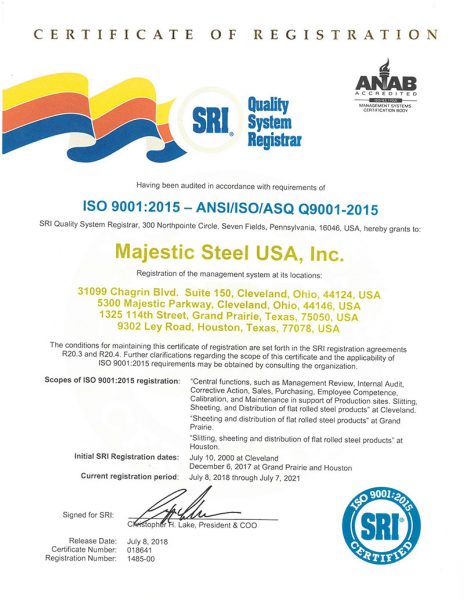Market Update | January 3, 2023
GAS PRICING DROPPED SHARPLY TO START THE NEW YEAR
Natural gas pricing has dropped with the sharp thaw across most of the Northern Hemisphere helping push prices lower. Pricing is currently at $3.99/mmbtu, down over 25.0% over the last two weeks and is below $4.00/mmbtu for the first time since the Russian invasion of Ukraine. Cheaper gas is good news for households and manufacturers whose budgets have been impacted by high fuel prices. Falling natural gas prices should also help cool inflation in the months ahead.
Input Costs
As the recent up and down movement for zinc continues, pricing declined after climbing the previous two weeks.
-
-
Zinc pricing came in at $1.36/lb this week, down from $1.40/lb previously and back below $1.50/lb for the second consecutive week.
-
Spot iron ore pricing increased this week, climbing to $117.65/mt.
-
-
This is up 2.6% from the end of last week and is up 7.3% on a m/m basis.
-
Met coal pricing rebounded again this week, ending the week at $294.50/mt.
-
-
This is up 3.1% from the end of last week and is now up 18.6% from this time last month.
-
Natural gas pricing has dropped sharply to start the new year as the sharp thaw across most of the Northern Hemisphere has helped push prices lower.
-
-
Natural gas pricing is currently at $3.99/mmbtu, down over 25.0% over the last two weeks and is below $4.00/mmbtu for the first time since the Russian invasion of Ukraine back in late February.
- Cheaper gas is good news for households and manufacturers whose budgets have been impacted by high fuel prices.
- Falling natural gas prices should help to cool inflation in the months ahead.
-
Supply
U.S. raw steel production declined again last week now down for two consecutive weeks.
-
- U.S. steelmakers produced 1.602 million tons at an 71.8% utilization rate.
- This was the lowest weekly output since the same week, two years ago.
- Adjusted production for the full year 2022 was down 5.8% compared to the 2021 total.
Total carbon steel imports continued to slide in November, now down for the fifth consecutive month.
-
- Carbon steel imports totaled 1.504 million tons, down sharply from 1.761 million tons in October and was at its lowest daily rate (50.1k tons/day) since December 2020.
- Carbon flat rolled imports declined sharply as well, sliding 14.5% from October to 432,022 tons.
- While hot rolled imports ticked slightly higher, sharp declines from both cold rolled and coated products pushed overall flat rolled lower.
- Coated sheet imports came in at a 5.6k tons/day rate, the lowest level in two years.
- Through November, total flat rolled imports are now down 12.9% compared to the first eleven months of 2021.
DEMAND
After sliding in October, total construction spending increased in November.
-
-
Total spending came in at a $1.808 trillion rate, up 0.2% from a $1.803 trillion rate in October.
-
Spending increased on a year-over-year basis as well, climbing 8.5% from a $1.665 trillion rate in November 2021
- The boost in spending in November solely came from non-residential construction, which saw a 0.9% month-over-month increase to a $930.1 billion rate.
- The increase in non-residential spending helped overcome a 0.5% decline in residential spending.
- Residential spending has now declined for six straight months.
- Non-residential spending now makes up 51.5% of total spending, the highest percentage since February 2021.
-
Economic activity from the manufacturing sector contracted further in December, marking the second consecutive month in decline.
-
-
The ISM Manufacturing Index came in at 48.4, down from 49.0 in November and down from 58.7 in December 2021.
- This is the lowest reading for the index since May 2020.
- Any reading below 50 indicates contraction in activity, while any reading over 50 shows expansion.
- Both the new orders and production components contracted in December, coming in at 45.2 and 48.5, respectively.
- While this was the fourth consecutive month in contraction for new orders, the production component slipped into contraction for the first time in over two years
- The backlog of orders component came in at 41.4, up slightly from 40.0 in November but still deep into contraction.
-
This material, information and analyses (the “Content”) may include certain statements, estimates and projections prepared with respect to, among other things, historical data and anticipated performance. Content may reflect various assumptions by Majestic Steel USA, Inc. concerning anticipated results that are inherently subject to significant economic, competitive and other uncertainties and contingencies and have been included for illustrative purposes. Content is provided AS-IS.

